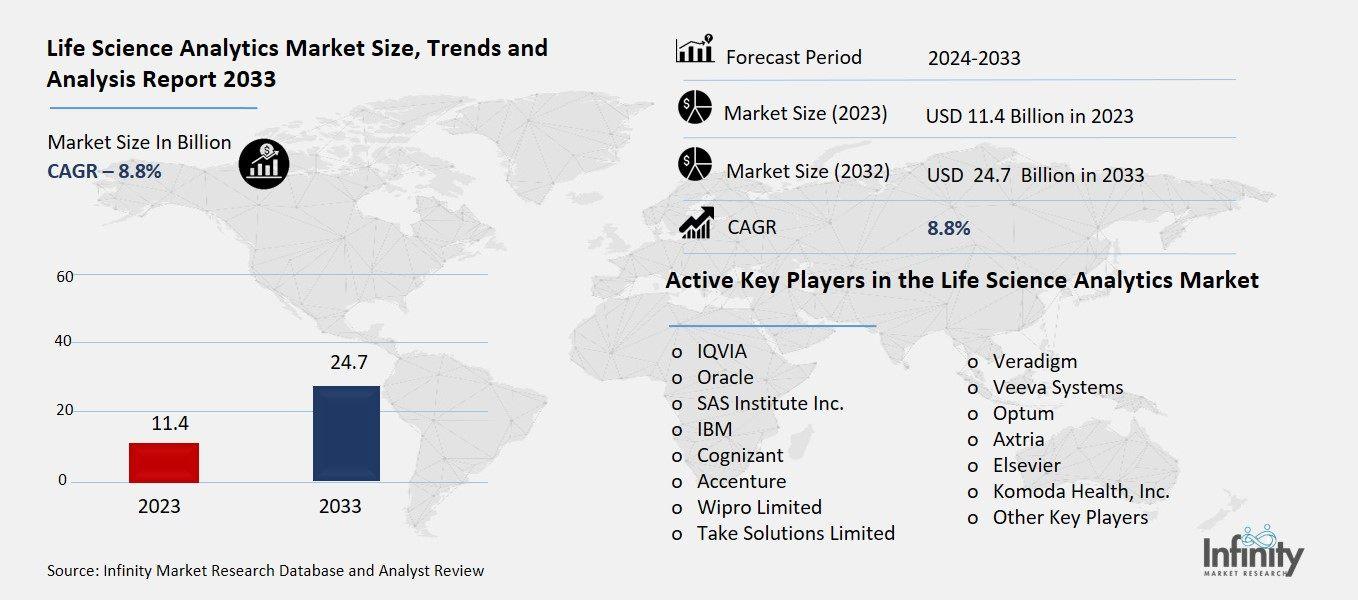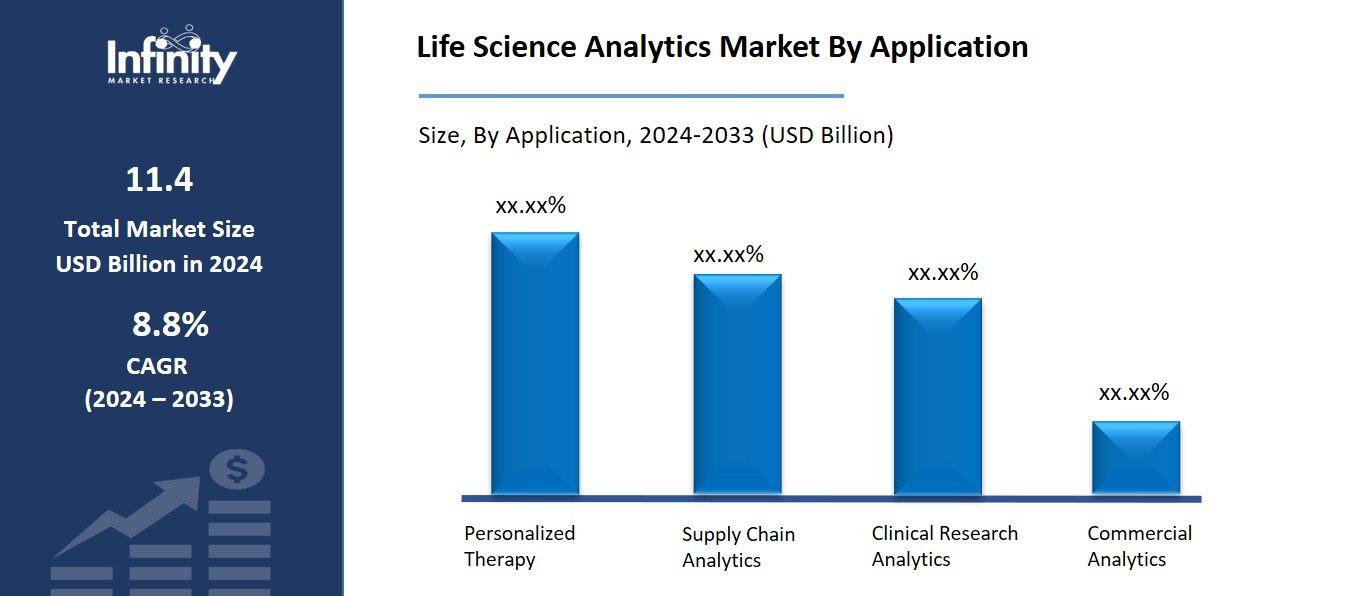
🔐 Secure Payment Guaranteed
Safe checkout with trusted global payment methods.
🌟 Why Choose Infinity Market Research?
At Infinity Market Research, we dont just deliver data — we deliver clarity, confidence, and competitive edge.
In a world driven by insights, we help businesses unlock the infinite potential of informed decisions.
Here why global brands, startups, and decision-makers choose us:
Industry-Centric Expertise
With deep domain knowledge across sectors — from healthcare and technology to manufacturing and consumer goods — our team delivers insights that matter.
Custom Research, Not Cookie-Cutter Reports
Every business is unique, and so are its challenges. Thats why we tailor our research to your specific goals, offering solutions that are actionable, relevant, and reliable.
Data You Can Trust
Our research methodology is rigorous, transparent, and validated at every step. We believe in delivering not just numbers, but numbers that drive real impact.
Client-Centric Approach
Your success is our priority. From first contact to final delivery, our team is responsive, collaborative, and committed to your goals — because you re more than a client; you re a partner.
Recent Reports
Global Myopia Control Lenses Market Report 2025-33
Hyaluronic Acid-based Dermal Fillers Market Report
Life Science Analytics Market
Life Science Analytics Market Global Industry Analysis and Forecast (2024-2033) by Type (Services and Software & Solutions), Delivery (On-premise and On-demand), Application (Personalized Therapy, Supply Chain Analytics, Clinical Research Analytics, and Commercial Analytics), End-User (Medical Device Companies, Pharma & Biotech Companies, Contract Research Organizations, and Other End-Users), and Region
Jun 2025
Healthcare
Pages: 138
ID: IMR2072
Life Science Analytics Market Synopsis
The Global Life Science Analytics Market was valued at USD 10.5 billion in 2023 and is expected to grow from USD 11.4 billion in 2024 to USD 24.7 billion by 2033, reflecting a CAGR of 8.8% over the forecast period.
Life Science Analytics Market describes the use of analytics tools and approaches in the life sciences sector, covering pharmaceuticals, biotech, clinical trials and medical devices. The market is being fueled by a higher demand for making data-based decisions, speeding up drug creation and improving how people recover from diseases. In this area, analytics depends on descriptive, predictive and prescriptive types to back clinical trials, make sure regulations are followed, improve supply chain processes and collect practical evidence. The market is growing largely because of the growing amounts of healthcare data, advancements in AI and the focus on personalized medicine. It is also worth noting that a need for faster drug development and switching to cost-based care systems is driving greater use of analytics.

Life Science Analytics Market Driver Analysis
Rising Demand for Data-Driven Decision Making
An increasing number of life science businesses are using analytics to support decision-making in areas such as R&D, clinical experiments and launching products in the market. In R&D, data analysis examines information from genomic research, experiments and past research to detect sensible candidates for new drugs. Analytics supports the real-time inspection of patient information, changes the way trials are designed, helps with recruiting participants and keeps dropout rates low, ultimately making the trials more effective and faster. During commercialization, analytics makes it possible to split the market up, anticipate market demand, determine pricing and maximize sales, all through looking at market trends and understanding consumer behaviors. Relying on insights from data at each step, life science organizations can cut expenses, lessen risks, improve how they comply with rules and bring treatments to market more quickly.
Life Science Analytics Market Restraint Analysis
Lack of Skilled Professionals
The industry lacks skilled data scientists and analytics professionals who can back their abilities with a strong knowledge of the domain. Many data analysts exist today, but only a small number have the understanding of biology, medical routines and regulation needed to use analytics in life sciences. As a result, organizations cannot put machine learning, analyzing real-world data and building predictive models to their greatest advantage. As a consequence, companies are not able to use complex datasets to gain helpful knowledge which holds back innovation and does not provide a strong impact in research, development and for patient care. Overcoming the talent gap helps organizations make the most of data-driven methods in the sector.
Life Science Analytics Market Opportunity Analysis
Growth in Cloud-Based Analytics Solutions
Life sciences companies are turning to cloud platforms as they support growth, help with expenses and allow for smoother group work. Organizations can use cloud-based analytics, unlike old on-premises tools, to easily adjust their computer needs as required, for example during genomic analysis or while running clinical trials. These solutions mean companies need less expensive and high-capacity technology, reducing the sum they must spend on operations. Also, because cloud technology supports global teams, researchers, clinicians and partners can easily access and exchange data safely whenever they are connected. Therefore, life sciences companies finding it easier to innovate and make data-supported choices tend to choose cloud services.
Life Science Analytics Market Trend Analysis
Shift Toward Real-World Evidence (RWE)
Real-world information (RWD) obtained from patients, insurers and healthcare providers is transforming the assessment and regulatory process for life sciences companies. RWD, unlike results from controlled trials, shows how treatments behave in normal clinical practices and provides data on how well patients adhere, the treatment’s long-term effects and its safety in many types of patients. More and more, this data is used to back up clinical trial findings, keep track of products after they enter the market and inform regulatory submissions. Both the FDA and EMA are promoting RWE to speed up approval of drugs and influence decisions about healthcare. That’s why using RWD helps life sciences companies make products better, show their value to health insurers and ensure the usefulness of therapies in daily practice.
Life Science Analytics Market Segment Analysis
The Life Science Analytics Market is segmented on the basis of Type, Delivery, and Application.
By Type
o Services
o Software & Solutions
By Delivery
o On-premise
o On-demand
By Application
o Personalized Therapy
o Clinical Research Analytics
o Commercial Analytics
By End-User
o Medical Device Companies
o Pharma & Biotech Companies
o Contract Research Organizations
o Other End-Users
By Region
o North America (U.S., Canada, Mexico)
o Eastern Europe (Bulgaria, The Czech Republic, Hungary, Poland, Romania, Rest of Eastern Europe)
o Western Europe (Germany, UK, France, Netherlands, Italy, Russia, Spain, Rest of Western Europe)
o Asia Pacific (China, India, Japan, South Korea, Malaysia, Thailand, Vietnam, The Philippines, Australia, New-Zealand, Rest of APAC)
o Middle East & Africa (Turkey, Bahrain, Kuwait, Saudi Arabia, Qatar, UAE, Israel, South Africa)
o South America (Brazil, Argentina, Rest of SA)
By Type, Software & Solutions Segment is Expected to Dominate the Market During the Forecast Period
The types discussed in this research study, the software & solutions segment is expected to account for the largest market share of life science analytics market in the forecast period. The need for advanced data analysis tools is increasing because the research field produces large and complex datasets daily. With software, life sciences companies can look at data in real time, forecast results and see findings clearly which all support better drug discovery, successful clinical studies, meeting regulations and good patient outcomes. Analytics software is now much more effective and liked by users because it incorporates AI, ML and cloud technology. Thanks to being scalable, flexible and affordable, these solutions are attractive to companies that want to update their data infrastructure and decide on things based on data.
By Delivery, the On-Demand Segment is Expected to Held the Largest Share
By delivery model, the on-demand (cloud-based) segment is expected to hold the largest share of the life science analytics market during the forecast period. Most of this growth is due to how flexible, scalable and reasonably priced cloud-based solutions are when compared with traditional local equipment. With on-demand analytics platforms, life sciences companies can use advanced equipment and IT systems without a big upfront cost or requiring hard-to-maintain, in-house systems. This way of working allows everyone to view and work with data as it is collected, fostering teamwork across different locations. Integrating artificial intelligence and machine learning becomes easier for cloud-based platforms, helping businesses stay flexible in the face of changing business and regulatory policies. Therefore, many life sciences companies now use on-demand delivery to boost their use of data analytics and make workflow management more convenient.
By Application, the Clinical Research Analytics Segment is Expected to Held the Largest Share
By application, the clinical research analytics segment is expected to hold the largest share of the life science analytics market during the forecast period. Increasing difficulty and cost in running clinical trials have made advanced analytics much sought after to improve how quickly and accurately a decision is made. Thanks to clinical research analytics, organizations can look at their trial data in real time, find where patient recruitment is slow, check for safety concerns and better predict what the outcomes will be. Clay platforms also make it easier to use adaptive trial designs and remain compliant with regulations because the data is accurate and visible. Since precision medicine and real-world evidence are now major parts of drug development, the use of strong analytics in clinical research is rising. Using EHRs, lab results and outcomes reported by patients allows clinical research analytics to help accelerate the creation of secure and helpful therapies.

By End-User, the Pharma & Biotech Companies Segment is Expected to Held the Largest Share
By end-user, the pharmaceutical and biotechnology companies segment is expected to hold the largest share of the life science analytics market during the forecast period. The main reason for this dominance is that drug companies now use data analytics to help in innovation, speed up inventions and boost the chances of successful drug discoveries and trials. These companies depend on analytics in areas such as finding targets, sorting patients, approvals with the government and strategies for selling in the market. Because the industry wants to get products to patients more quickly and affordably, these businesses are spending more on AI, machine learning and real-world data analysis technologies. Due to pressure from regulators and payers, pharmaceutical and biotech companies are turning to more advanced ways of using data. For these reasons, this group still dominates the use of analytics and spending, maintaining its major role in expanding the market.
Life Science Analytics Market Regional Insights
North America is Expected to Dominate the Market Over the Forecast period
North America is expected to dominate the life science analytics market over the forecast period, driven by its advanced healthcare infrastructure, strong presence of leading pharmaceutical and biotechnology companies, and high adoption of digital technologies. The area is supported by a lot of research in healthcare and the abundant use of online health records which feeds the use of analytics. Besides, the U.S. Food and Drug Administration (FDA) is making sure the medical world uses more real-world evidence and data to guide decisions, putting more pressure on the demand for such solutions. Safe to say, skilled workers, strong IT support and frequent teamwork between bio companies and technology industries make North America leaders in Life Sciences. This makes the region ideally placed to preserve its leading role by continuing to advance and apply advanced analytics throughout the life sciences industry.
Recent Development
In December 2024, Cognizant and Salesforce partnered to drive innovation in the life sciences sector by leveraging the capabilities of Salesforce Life Sciences Cloud.
In October 2024, Oracle collaborated with EVERSANA to deploy the Oracle Argus Cloud Service, with the goal of enhancing pharmacovigilance by strengthening regulatory compliance, automating key processes, and improving global drug safety operations through advanced analytics and efficient workflows.
Active Key Players in the Life Science Analytics Market
o IQVIA
o Oracle
o IBM
o Cognizant
o Wipro Limited
o Take Solutions Limited
o Veradigm
o Veeva Systems
o Optum
o Axtria
o Elsevier
o Komoda Health, Inc.
o Other Key Players
Global Life Science Analytics Market Scope
|
Global Life Science Analytics Market | |||
|
Base Year: |
2024 |
Forecast Period: |
2024-2033 |
|
Historical Data: |
2017 to 2023 |
Market Size in 2023: |
USD 10.5 Billion |
|
Market Size in 2024: |
USD 11.4 Billion | ||
|
Forecast Period 2024-33 CAGR: |
8.8% |
Market Size in 2033: |
USD 24.7 Billion |
|
Segments Covered: |
By Type |
· Services · Software & Solutions | |
|
By Delivery |
· On-premise · On-demand | ||
|
By Application |
· Personalized Therapy · Supply Chain Analytics · Clinical Research Analytics · Commercial Analytics | ||
|
By End-User |
· Medical Device Companies · Pharma & Biotech Companies · Contract Research Organizations · Other End-Users | ||
|
By Region |
· North America (U.S., Canada, Mexico) · Eastern Europe (Bulgaria, The Czech Republic, Hungary, Poland, Romania, Rest of Eastern Europe) · Western Europe (Germany, UK, France, Netherlands, Italy, Russia, Spain, Rest of Western Europe) · Asia Pacific (China, India, Japan, South Korea, Malaysia, Thailand, Vietnam, The Philippines, Australia, New-Zealand, Rest of APAC) · Middle East & Africa (Turkey, Bahrain, Kuwait, Saudi Arabia, Qatar, UAE, Israel, South Africa) · South America (Brazil, Argentina, Rest of SA) | ||
|
Key Market Drivers: |
· Rising Demand for Data-Driven Decision Making | ||
|
Key Market Restraints: |
· Lack of Skilled Professionals | ||
|
Key Opportunities: |
· Growth in Cloud-Based Analytics Solutions | ||
|
Companies Covered in the report: |
· IQVIA, Oracle, SAS Institute Inc., IBMand Other Key Players. | ||
📘 Frequently Asked Questions
1. What would be the forecast period in the Life Science Analytics Market Research report?
Answer: The forecast period in the Life Science Analytics Market Research report is 2024-2033.
2. Who are the key players in the Life Science Analytics Market?
Answer: IQVIA, Oracle, SAS Institute Inc., IBMand Other Key Players.
3. What are the segments of the Life Science Analytics Market?
Answer: The Life Science Analytics Market is segmented into Type, Delivery, Application, and Regions. By Type, the market is categorized into Services and Software & Solutions. By Delivery, the market is categorized into On-premise and On-demand. By Application, the market is categorized into Personalized Therapy, Supply Chain Analytics, Clinical Research Analytics, and Commercial Analytics. By End-User, the market is categorized into Medical Device Companies, Pharma & Biotech Companies, Contract Research Organizations, and Other End-Users. By region, it is analyzed across North America (U.S.; Canada; Mexico), Eastern Europe (Bulgaria; The Czech Republic; Hungary; Poland; Romania; Rest of Eastern Europe), Western Europe (Germany; UK; France; Netherlands; Italy; Russia; Spain; Rest of Western Europe), Asia-Pacific (China; India; Japan; Southeast Asia, etc.), South America (Brazil; Argentina, etc.), Middle East & Africa (Saudi Arabia; South Africa, etc.).
4. What is the Life Science Analytics Market?
Answer: The Life Science Analytics Market involves using new types of data analysis to help both choose better actions and make the life sciences industry more efficient, covering pharmaceuticals, biotechnology, medical devices and healthcare. In this market, data related to patients, procedures and healthcare is analyzed to make R&D, trials, regulations and market entrance strategies better. As healthcare data grows and as medicine and drugapprovals are needed more quickly, companies in the life sciences are using analytics to gain insights, help people recover more effectively and follow rules. With technologies like artificial intelligence (AI), machine learning (ML) and big data analytics, the market can achieve accurate forecasting, real world evidence and improved care for patients.
5. How big is the Life Science Analytics Market?
Answer: The Global Life Science Analytics Market was valued at USD 10.5 billion in 2023 and is expected to grow from USD 11.4 billion in 2024 to USD 24.7 billion by 2033, reflecting a CAGR of 8.8% over the forecast period.


🔐 Secure Payment Guaranteed
Safe checkout with trusted global payment methods.
🌟 Why Choose Infinity Market Research?
- Accurate & Verified Data:Our insights are trusted by global brands and Fortune 500 companies.
- Complete Transparency:No hidden fees, locked content, or misleading claims — ever.
- 24/7 Analyst Support:Our expert team is always available to help you make smarter decisions.
- Instant Savings:Enjoy a flat $1000 OFF on every report.
- Fast & Reliable Delivery:Get your report delivered within 5 working days, guaranteed.
- Tailored Insights:Customized research that fits your industry and specific goals.




